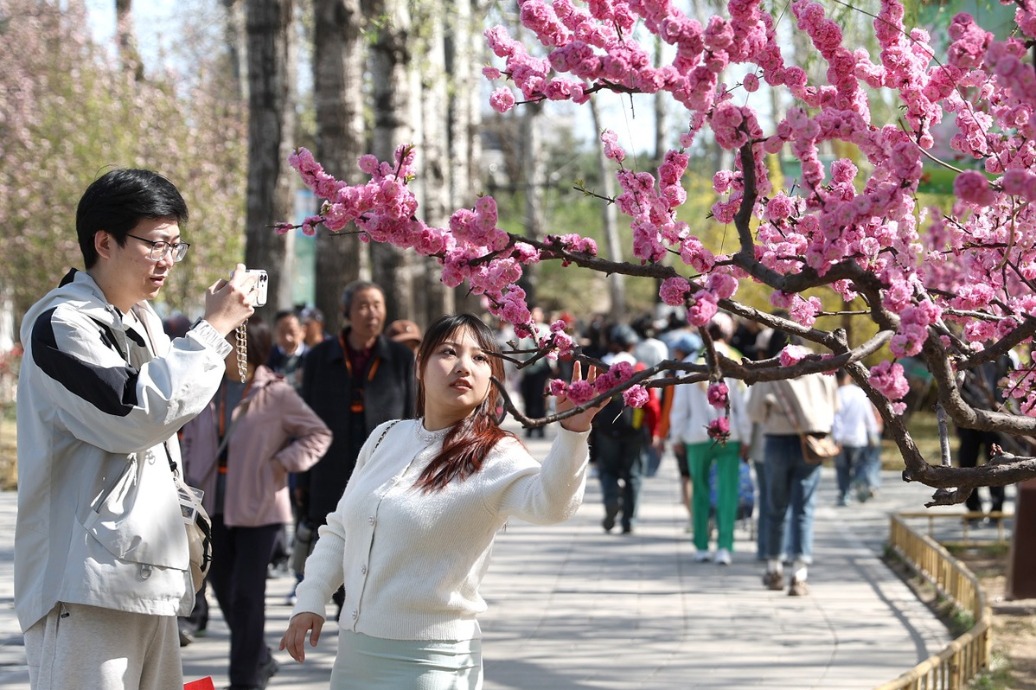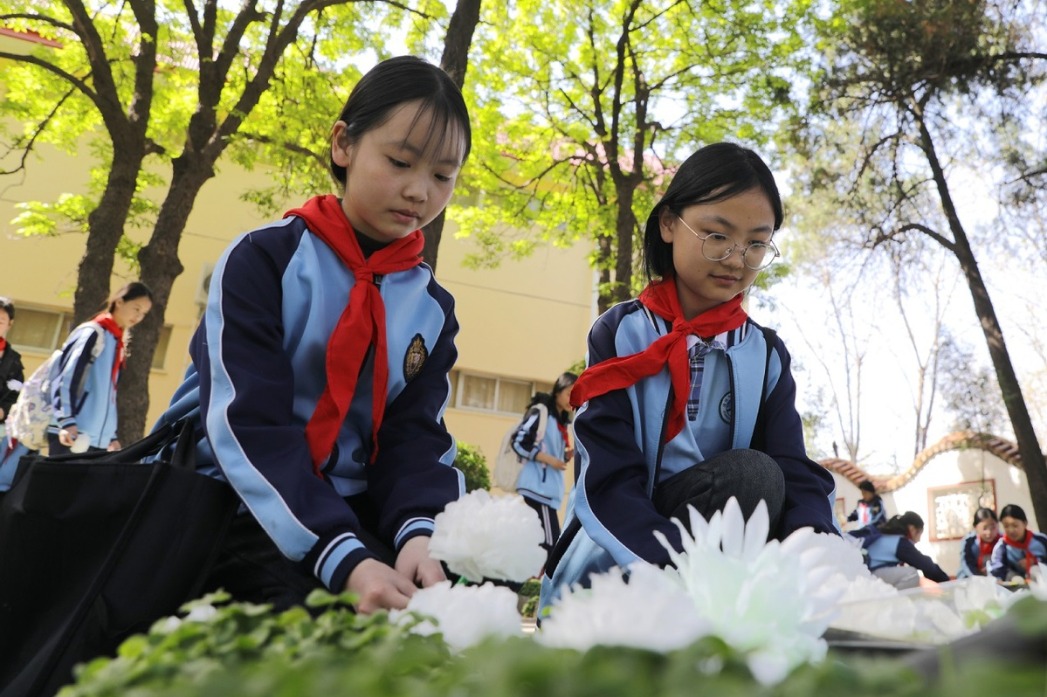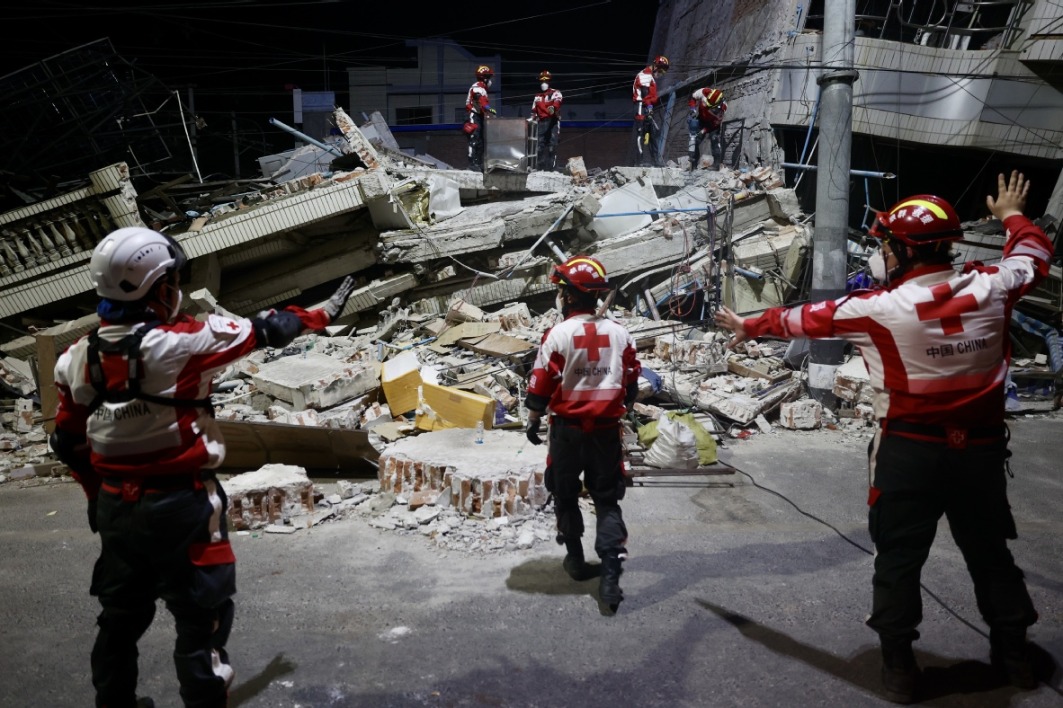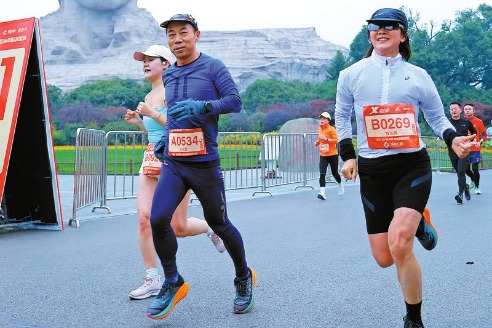Green funerals rise in Mother Nature's final embrace

Since the launch of sea burials in 1994, Beijing has laid nearly 40,000 residents to rest in the ocean, a Beijing Municipal Civil Affairs Bureau spokesperson said.
Yang Zhiwei said sea burials now account for 4 percent of the city's annual cremation services. "In the recent decade, we have seen a gradual rise in public acceptance and participation in sea burials," Yang said at a news conference a week before this year's Tomb Sweeping Day, which falls on Friday.
In 2017, Beijing expanded its ecological burial options by introducing natural burials. Municipal and district cemeteries have since promoted a number of personalized, land-saving green burials.
During this year's Qingming Festival, Beijing will host multiple sea burial ceremonies and launch a collaborative sea burial event at Tianjin Port for residents of the Beijing-Tianjin-Hebei region. An eco-burial memorial event will be held at Changqingyuan Cemetery in Beijing's Chaoyang district to raise public awareness and acceptance of sea and natural burials, Yang said.
Featuring minimal land use and the absence of tombstones, eco-burial options include tree, lawn, flower bed, wall, sea, and deep-ground without a gravestone burials, all of which allow ashes to integrate with nature and return to the earth or sea.
Meanwhile, innovative eco-burial methods are also emerging worldwide. Natural organic reduction, sometimes referred to as "human composting", is defined as the contained, accelerated conversion of human remains to soil.
The process uses large tanks, containers, or similar vessels to hold human remains together with straw, wood chips, and alfalfa for four to six weeks, according to the National Funeral Directors Association in the United States. Over several weeks, microbial activity breaks down the body, transforming it into nutrient-rich soil.
The average cost of such a funeral is around $7,000. In January 2023, New York became the sixth US state to legalize human composting.
Other innovative burial practices include cryo-burials, where bodies are preserved at — 196 C using liquid nitrogen. Developed by Swedish scientists, this method dehydrates and pulverizes the body into powder. South Korea was the first country in Asia to adopt this technology, according to Chongqing-based Shangyou News.
Space burials, once a concept of science fiction, have also become a reality. In 2018, US-based Elysium Space sent the remains of 100 individuals into outer space aboard SpaceX's Falcon 9 rocket. For $2,500, families can send 1 gram of ashes into orbit, with a tracking app to follow the satellite's path around Earth, BBC reported.
In addition, fireworks burials mix ashes into fireworks for a final send-off in the night sky. Families can organize personal displays or work with professional companies to create tailored pyrotechnic shows, with costs ranging from $1,800 to $3,600.
Zhou Wenbo contributed to this story.




































